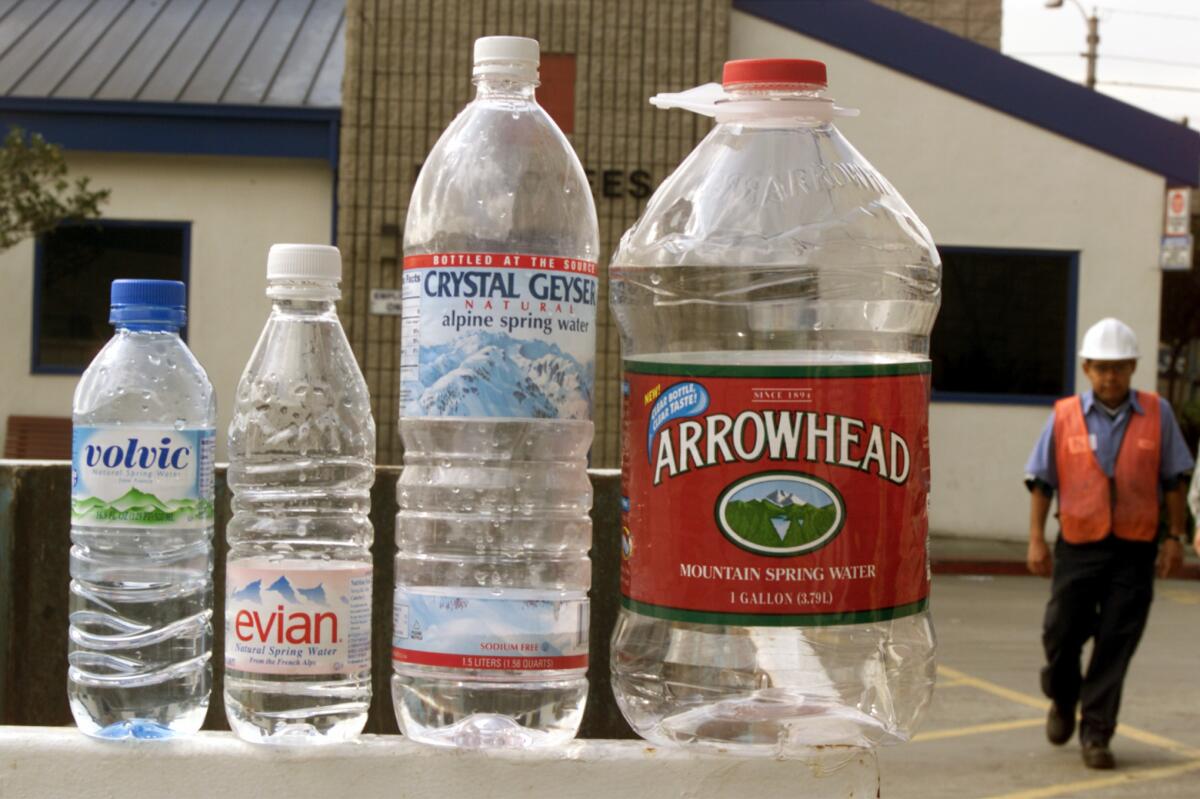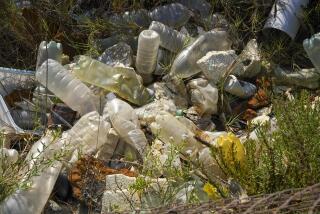These newly discovered bacteria can eat plastic bottles

Researchers in Japan have discovered a bacteria that eats plastic bottles.
- Share via
A team of Japanese scientists has found a species of bacteria that eats the type of plastic found in most disposable water bottles.
The discovery, published Thursday in the journal Science, could lead to new methods to manage the more than 50 million tons of this particular type of plastic produced globally each year.
The plastic found in water bottles is known as polyethylene terephalate, or PET. It is also found in polyester clothing, frozen-dinner trays and blister packaging.
“If you walk down the aisle in Walmart you’re seeing a lot of PET,” said Tracy Mincer, who studies plastics in the ocean at the Woods Hole Oceanographic Institution in Massachusetts.
Part of the appeal of PET is that it is lightweight, colorless and strong. However, it has also been notoriously resistant to being broken down by microbes -- what experts call “biodegradation.”
Previous studies had found a few species of fungi can grow on PET, but until now, no one had found any microbes that can eat it.
To find the plastic-eating bacterium described in the study, the Japanese research team from Kyoto Institute of Technology and Keio University collected 250 PET-contaminated samples including sediment, soil and wastewater from a plastic bottle recycling site.
Next they screened the microbes living on the samples to see whether any of them were eating the PET and using it to grow. They originally found a consortium of bugs that appeared to break down a PET film, but they eventually discovered that just one of bacteria species was responsible for the PET degradation. They named it Ideonella sakaiensis.
Further tests in the lab revealed that it used two enzymes to break down the PET. After adhering to the PET surface, the bacteria secretes one enzyme onto the PET to generate an intermediate chemical. That chemical is then taken up by the cell, where another enzyme breaks it down even further, providing the bacteria with carbon and energy to grow.
The researchers report that a community of Ideonella sakaiensis working this way could break down a thin film of PET over the course of six weeks if the temperature were held at a steady 86 degrees Fahrenheit.
Mincer, who was not involved in the work, said the study was impressive and did a good job showing that these organisms were eating the plastic pretty well. However, he said it was not immediately clear whether or not it would help keep plastics out of the ocean, for example.
“When I think it through, I don’t really know where it gets us,” he said. “I don’t see how microbes degrading plastics is any better than putting plastic bottles in a recycling bin so they can be melted down to make new ones.”
He added that the research could make it easier to identify other microbes that might have similar PET-degrading capabilities.
“This process could be quite common,” he said. “Now that we know what we are looking for, we may see these microbes in many areas around the world.”
Do you love science? I do! Follow me @DeborahNetburn and “like” Los Angeles Times Science & Health on Facebook.
For more news on global sustainability, go to our Global Development Watch page: latimes.com/global-development







